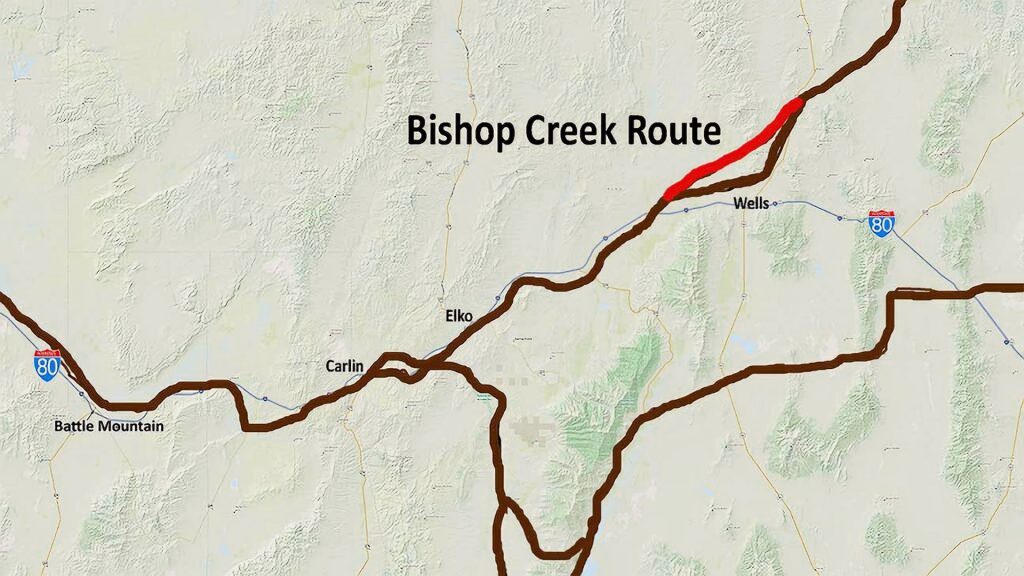
Bishop Creek Route - 1843
The 20.5 mile Bishop Creek Cutoff in fact is not a cutoff but the original route of the California Trail. The route to Humboldt Wells, which is now part of the designated national historic trail, was a later diversion.
The Bishop Creek Route leaves the designated California National Historic Trail at Willow Creek, west of the Windermere Hills and about 14 miles northeast of Wells, Nevada. The trail crosses US 93 and follows Bishop Creek west. The route then runs along the floor of a modern reservoir. It passes the Bishop Canyon Hot Springs (also called Twelve Mile Spring), where emigrants liked to stop and enjoy the warm water, and continues down the creek for about 11.5 miles to the Humboldt River. There it rejoins the designated California National Historic Trail.
In 1843, mountain man Joseph Walker led a California-bound wagon party through the City of Rocks in today’s Idaho, across Thousand Springs Valley, Nevada, and down Bishop Creek to the Humboldt River. His was the earliest emigrant route connecting Thousand Springs Valley with the Humboldt River. An 1845 variant, now part of the currently designated California National Historic Trail, later diverted traffic from Thousand Springs Valley to Humboldt Wells (today, Wells, Nevada) and thence to the river. Researchers studying emigrant diaries have determined that in 1849, two-thirds of California-bound travelers took the newer, detour alternate to Humboldt Wells while one third continued to use the original California Trail down Bishop Creek, and the proportion probably holds through the 1850s. Most emigrants knew the Bishop Creek Route simply as part of the Fort Hall Road. Many complained of the rough, rocky road and the deep, narrow canyon but most enjoyed soaking their feet in the large warm spring (Twelve Mile Spring) near the southwest end of the canyon.



